#gamifications solutions
Explore tagged Tumblr posts
Text
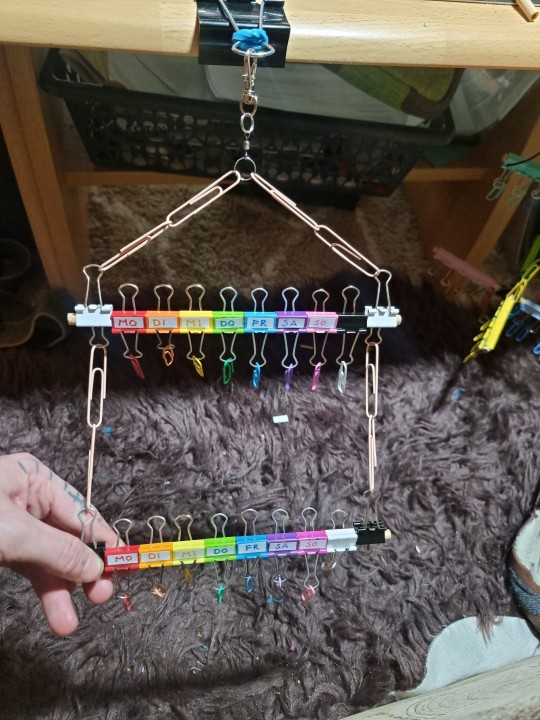

Two weeks to-do-list hanger
[too lazy to write description rn, communicating is exhausting atm, but i want to share nevertheless]
#diy#planner#colorful#foldback clamps#knottys crafts#weekly calendar#to do list#gamification#adhd#adhd solutions#boredom#boredoom#paperclips#modular#hanger
38 notes
·
View notes
Text
I'd also like to recommend Sheppard Software! They have geography games by continent, with a lot of scaling difficulty - the earliest levels (other than tutorials) are just clicking on countries by region within a continent, and the trickiest levels are like... rotating, resizing, and dropping a country onto the map, where it turns invisible once it's placed. That's a little extreme, but it's good for getting a knack for relative sizes and latitude + longitude of countries. There's also games for capitals, bodies of water/rivers, and other geographical features. It looks like they're converting their games to a new format, so not all content is available, unfortunately, but the world map, Europe, Africa, Asia, and US states are.
i think that, if youre usamerican and any time someone calls out your lack of knowledge on global geography you start talking about how bad the usa education is and how its actually not your fault that you dont know what continent nigeria is on because you cant look at the google maps bc donald trump will personally shoot you, youre very annoying
#i used to be really good at countries from that site#i still sort of remember a lot of 'this is in X region' from it#well... to get less derailing. gamification is good for memorizing a lot of countries at once#but also you should be reading world news and looking up maps when you know you don't know where one of the countries involved is#i cannot honestly say i do this to the extent i should#but it's. really the correct solution.
42K notes
·
View notes
Text
Gamify to Grow: Boosting User Engagement for Business Impact
In today’s digital-first era, brands are rapidly embracing gamification strategies to amplify user engagement, improve retention, and drive business outcomes. Whether through immersive experiences, custom gaming solutions, or interactive designs, gamification has become a game-changer for businesses seeking deeper customer connections.
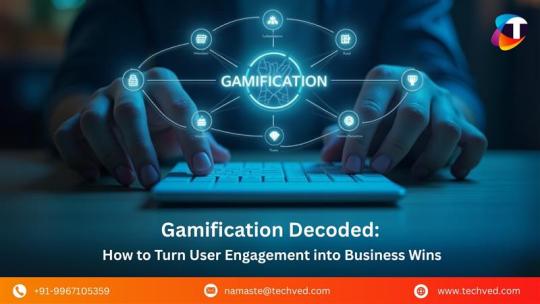
Why Gamification Works for Modern Brands
Gamification taps into intrinsic human motivations—reward, achievement, and competition—to turn passive users into active participants. By integrating elements like points, levels, and leaderboards into digital journeys, brands unlock richer engagement and emotional investment.
Game UI Design: Crafting Engaging Visual Experiences
Game UI design is pivotal in ensuring that gaming experiences are not just functional but delightful. A seamless user interface bridges creativity and usability, allowing users to focus on gameplay without friction.
Top game design companies in India are now prioritizing UI/UX to design intuitive, aesthetically appealing, and immersive interfaces that enhance the user journey. From game graphic design to website design games, design plays a crucial role in engagement and retention.
The Role of Game UX Design in User Retention
An effective game UX design ensures that players stay engaged and motivated throughout the game. From onboarding to progression, the entire journey should be frictionless. Companies offering UX game design services focus on user-centric interactions that drive satisfaction and encourage replayability.
Game Design and Development Services: Turning Concepts into Reality
Building a compelling game requires more than just a creative idea. It demands end-to-end expertise in game design and development, combining storytelling, art, and technology. Whether it's mobile, PC, or VR gaming, game development services must align with user expectations and market trends.
Leading game design companies offer:
Digital game design
Game development technologies
Game development solutions
Custom game development solutions
Game creation services
These services ensure games are not just playable, but addictive and rewarding.
Why Partner with a Game Design Company in India
India has emerged as a global hub for innovative game development. Choosing a game design services company in India gives you access to:
Skilled developers and designers
Competitive pricing
Cutting-edge game development technologies
Rich experience in video game development
Several top game development companies in India offer holistic solutions from concept to launch, making them ideal partners for global businesses.
Game Development Company in India: From Vision to Execution
A reputed game development company doesn’t just build a product—it brings a vision to life. With experience in games development, these companies leverage agile workflows and creative prowess to deliver successful, scalable, and enjoyable games.
Leading services include:
Game design online
Custom gaming solutions
Game design and development services
Game development service
Game development technologies
They ensure end-user satisfaction while meeting business KPIs.
Gamification in Non-Gaming Platforms
Gamification isn’t limited to traditional games. Brands now gamify everything—from eCommerce platforms to education apps—using game UI/UX design principles. Whether it’s a website design game or an app with game design solutions, the goal is to elevate user experience through interaction and playfulness.
TECHVED: Your Partner for Custom Game Design Services
TECHVED stands out as a leading provider of custom gaming solutions and UI/UX design for gamified platforms. Our innovative approach combines creativity with functionality, making us a trusted game design services company in India.
Conclusion: Gamify to Grow
Whether you're a brand looking to build immersive digital products or an enterprise ready to gamify your customer experience, investing in game development is a powerful step forward. Choose a top-tier game design company, align with future-ready game development services, and unlock the potential of user engagement that drives real business results.
#gamification#game ui design#game design services#game development company#game development solutions
1 note
·
View note
Text
Gamification in Fintech Driving Engagement in 2025
New methods for handling money are emerging. gamification in fintech driving engagement in 2025 explains how game mechanics turn everyday transactions into engaging experiences. The blog offers useful insights and practical examples that help readers look at financial tasks with a fresh perspective. Read the whole blog to know more.
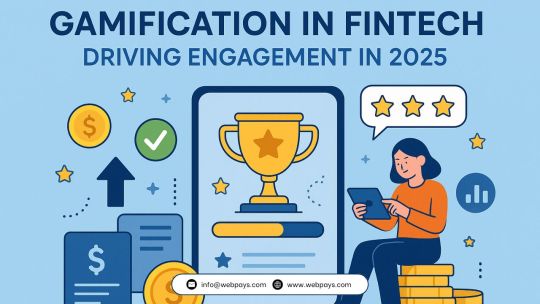
#payment processing#payments#payment processor#payment solutions#merchant account#online payments#fintech#gamification#finance
0 notes
Text
The Metaverse is transforming education by enabling immersive, interactive, and engaging learning experiences. Simulanis, a leader in AR, VR, MR, and Metaverse solutions, is at the forefront of this revolution, developing cutting-edge immersive learning technologies for various industries.
#Metaverse education#VR learning solutions#Simulanis Metaverse#Virtual classrooms#Immersive learning#VR training for students#Augmented reality education#AI in education#Gamification in learning#Industrial training in VR#Virtual reality for schools#Metaverse training simulations#Experiential learning technology#Digital twins in education#Simulanis VR training#AI-powered education#Remote learning with VR#Blockchain in education#Future of e-learning#VR medical training#Augmented reality classrooms#Virtual skills development#Metaverse for corporate training#EdTech Metaverse solutions#Interactive learning environments#VR language learning#Simulanis AR VR solutions#Metaverse-based e-learning#Haptic feedback in education#Next-gen education technology
0 notes
Text
#healthcare benefits#employee health benefits#healthcare solutions#healthcare services#stress management for employees#gamification in the workplace#gamification at work#healthcare management#SecondMedic Corporate healthcare solutions
0 notes
Text
Breaking Down Schell’s Four Pillars of Gamification: A Game-Changing Approach to Learning
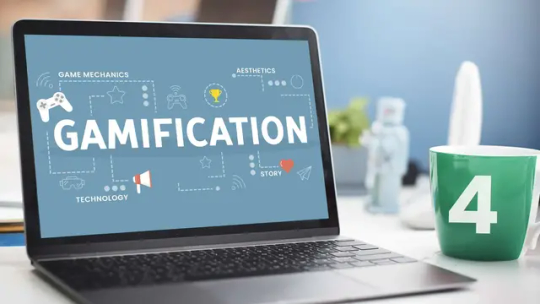
Schell's Four Pillars of Gamification: A Comprehensive Guide to Transforming Learning
Gamification has revolutionized the way we approach learning, transforming mundane training modules into engaging experiences that captivate learners and enhance retention. At the heart of this transformation is Jesse Schell’s Four Pillars of Gamification, a framework that provides the blueprint for designing impactful gamified experiences. This article delves into these four pillars—story, mechanics, aesthetics, and technology—and explores how they can be effectively applied to learning and development.
The Foundation: What Are Schell’s Four Pillars of Gamification?
Jesse Schell, a renowned game designer and educator, introduced the concept of the four pillars to guide the creation of gamified experiences. These pillars—story, mechanics, aesthetics, and technology—serve as the essential components for building engaging and meaningful games. When applied to learning, they transform traditional methods into dynamic experiences that motivate and inspire learners.
Pillar 1: Story
The Power of Narrative in Learning
Stories are the backbone of human connection and understanding. In the context of gamification, narratives create a sense of purpose, making learning more relatable and memorable. A compelling story can:
Provide context for learning objectives.
Engage learners emotionally.
Encourage progression by framing challenges within a meaningful narrative arc.
How to Use Story in Gamified Learning
To integrate storytelling effectively, consider:
Role-playing scenarios: Learners assume characters with missions tied to learning goals.
Progressive narratives: As learners advance, they unlock new chapters of the story, reinforcing achievements.
Real-world relevance: Stories that mirror workplace scenarios make learning practical and applicable.
For instance, in a compliance training module, learners could be agents solving a corporate mystery, with each task linked to a compliance requirement.
Pillar 2: Mechanics
Designing the Rules of Engagement
Mechanics are the rules, challenges, and interactions that drive the gamified experience. They provide structure, ensuring that the game is engaging while maintaining alignment with learning objectives. Key mechanics include:
Points and rewards: Motivate learners by recognizing achievements.
Levels and progression: Offer a clear path for advancement.
Challenges and feedback: Keep learners engaged with tasks of appropriate difficulty and timely responses.
Applying Mechanics to Learning Platforms
When designing a gamified learning experience, ensure mechanics are:
Aligned with learning outcomes: For example, a sales training program might reward learners for correctly answering customer scenario questions.
Balanced for all learners: Mechanics should cater to varying skill levels, avoiding frustration or disengagement.
Iterative and adaptive: Allow for real-time adjustments based on learner feedback and performance.
MaxLearn’s microlearning platform exemplifies this by incorporating leaderboards, badges, and adaptive learning pathways that maintain engagement while meeting individual needs.
Pillar 3: Aesthetics
The Visual and Emotional Experience
Aesthetics in gamification encompass the visual design, sound effects, and overall atmosphere of the learning environment. They play a crucial role in shaping first impressions and sustaining interest.
Why Aesthetics Matter in Learning
Attract attention: Eye-catching designs draw learners in.
Evoke emotions: Engaging visuals and sounds create an emotional connection.
Enhance immersion: A well-designed environment helps learners feel part of the experience.
Best Practices for Aesthetics in Learning
To optimize aesthetics:
Align visuals with the narrative: Consistency between story and design creates a cohesive experience.
Prioritize usability: Intuitive layouts and clear navigation reduce cognitive load.
Use multimedia: Incorporate videos, animations, and interactive elements to enrich the learning process.
For instance, a gamified onboarding program might use vibrant, brand-aligned visuals and a welcoming soundtrack to make new employees feel at home.
Pillar 4: Technology
The Backbone of Gamification
Technology underpins the gamification experience, enabling the seamless integration of story, mechanics, and aesthetics. It determines the scalability, accessibility, and interactivity of the learning platform.
Key Technological Considerations
Platform capabilities: Ensure the LMS supports gamification features like leaderboards, real-time analytics, and adaptive pathways.
Integration: Compatibility with existing tools and systems enhances the user experience.
Accessibility: Mobile-first designs ensure learners can engage anytime, anywhere.
Innovations in Gamified Learning Technology
Emerging technologies like AI, AR, and VR are pushing the boundaries of gamification. AI-powered adaptive learning systems personalize content delivery, while VR and AR create immersive scenarios that mimic real-world challenges.
For example, MaxLearn’s AI-powered authoring tools streamline course creation, making it easier to integrate gamification into training modules.
Bringing It All Together: The Synergy of the Four Pillars
The true power of Schell’s Four Pillars lies in their synergy. When combined effectively, they create a holistic experience that:
Engages learners emotionally through compelling stories.
Motivates and challenges them with well-designed mechanics.
Captivates their attention with appealing aesthetics.
Delivers seamless experiences powered by cutting-edge technology.
For instance, a customer service training program might integrate:
A narrative where learners play the role of problem-solving heroes.
Mechanics like points for resolving customer queries correctly.
A visually engaging dashboard with progress tracking.
AI-driven feedback to guide improvement.
Conclusion: Unlocking the Potential of Gamified Learning
Schell’s Four Pillars of Gamification offer a robust framework for transforming traditional training into engaging, impactful experiences. By leveraging story, mechanics, aesthetics, and technology, organizations can create learning solutions that not only educate but also inspire and retain employees.
In today’s fast-paced world, where attention spans are short and engagement is key, the integration of these pillars is more critical than ever. Platforms like MaxLearn, with their focus on microlearning and gamification, exemplify how these principles can be applied effectively to meet modern learning demands.
Whether you’re designing a corporate training program or an educational course, embracing Schell’s pillars will ensure your gamified learning initiatives achieve their full potential.
#Gamified Learning Apps#Gamification Resources#Gamification Learning#Gamification Apps#Gamification in the Workplace#Gamification Training#Gamification in Corporate Training#Gamification Examples in Training#Gamification Ideas for Training#What is Gamification#What is Gamification Aspect#Gamify Definition#Gamification Techniques#Gamification Features#Gamification Software#Gamification Platform#Gamified Learning Platforms#Gamification Solutions#Gamified Learning#Gamified Training Platform#Gamified Learning Platform#Gamification for Employee Engagement#microlearning platform#microlearning#microlearning best practices#microlearning content#microlearning training#microlearning theory#microlearning topics#microlearning examples
0 notes
Text
AITribes Professional by Ben Murray and Karthik Ramani Review
AITribes Professional by Ben Murray and Karthik Ramani – Auto-build Next Generation Sites that Sell Products and Courses, Generate Leads, and Build Fans Hands-free with AI. AITribes Professional by Ben Murray and Karthik Ramani. Easy Customization & Site Setup, Pick from a variety of site customization options like colors, fonts, domain names, unique images and banners, and more to customize your…
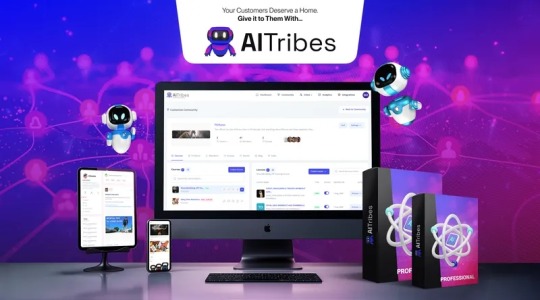
View On WordPress
#AI automation for community building#AI-powered community management tools#All-in-one community management solution#Best practices for user engagement in online communities#Customizable templates for community platforms#Email marketing for online communities#Gamification to boost member participation#How to monetize online communities#Private messaging features in community platforms#Selling courses through community platforms
1 note
·
View note
Text
Channel incentives are the central pillar of PRM programs. Incentives are powerful drivers to engage, motivate, and accelerate partners to meet targets and milestones.
#Channel Incentives#Channel Incentives with PRM#PRM#PRM Marketing Services#PRM programs#gamification#loyalty solutions#loyalty partner#loyalty program#B2B channel incentive#Partner incentives
0 notes
Text
Retail Telecom Loyalty Management Solutions: Ignite Loyalty
Retail telecom operators are increasingly confronted with a significant challenge: maintaining and growing customer loyalty in an industry where switching providers is easier than ever. Customers are not only more informed but also more demanding, expecting seamless experiences and personalized interactions. Customer churn can quickly erode profitability, making it imperative for telecom companies to develop robust strategies to keep their customers engaged and loyal.
Traditional methods of managing loyalty often prove inadequate, unable to keep pace with the evolving preferences and behaviors of today’s consumers. This is where loyalty management for retail telecom becomes essential, providing operators with a strategic solution to build and sustain customer loyalty through personalized, data driven approaches.
A telecom loyalty management solution offers retail telecom companies the tools necessary to address these challenges head-on. Unlike generic rewards programs, these solutions focus on fostering long-term relationships with customers by delivering experiences tailored to their specific needs and preferences.
Utilizing advanced analytics and insights, telecom operators can craft loyalty programs that not only resonate with their target audience but also drive significant improvements in customer retention and lifetime value. As the retail telecom industry becomes increasingly competitive, the importance of deploying effective customer loyalty solutions for telecom cannot be overstated.
Overcoming Loyalty Challenges in Retail Telecom
The retail telecom sector faces distinct challenges in fostering customer loyalty. With the proliferation of mobile devices, streaming services, and digital communication platforms, customers now have a multitude of options at their fingertips.
This abundance of choice has led to a decline in traditional brand loyalty, with customers more willing than ever to switch providers if their needs aren’t met. For telecom operators, this presents a critical issue: how do you cultivate and sustain customer loyalty in an environment where alternatives are readily available?
Telecom loyalty management solutions are designed to address this challenge by providing operators with the insights needed to understand their customers on a granular level. By analyzing customer data, telecom companies can identify key drivers of loyalty and tailor their offerings to meet those specific needs. This could involve creating personalized offers, offering exclusive rewards, or implementing proactive service interventions designed to pre-empt churn. Moreover, these solutions enable telecom operators to segment their customer base, allowing them to target high-value customers with customized loyalty programs that deepen their engagement with the brand.
In an industry where customer satisfaction is directly tied to revenue, investing in sophisticated telecom loyalty management software is not just beneficial, it’s imperative.
Elevating Customer Loyalty with Telecom Loyalty Management Solutions
To truly elevate customer loyalty, telecom operators must transcend traditional loyalty programs that rely solely on rewards. While rewards are a vital component, they represent only one facet of a comprehensive loyalty strategy. An effective telecom loyalty management solution integrates rewards with a broader approach that includes customer engagement, personalized communication, and proactive service delivery.
One of the most potent ways to enhance loyalty is through personalized experiences. By leveraging loyalty management solutions, telecom operators can use customer data to create tailored interactions that resonate on a personal level. This might involve delivering personalized offers based on past behaviors, crafting targeted communication that addresses specific customer needs, or providing exclusive access to services that enhance the overall customer experience.
When customers feel understood and valued, their loyalty to the brand deepens, resulting in higher retention rates and greater lifetime value. Furthermore, customer loyalty solutions for telecom empower operators to identify and address potential issues before they escalate into churn. By monitoring customer behavior in real-time, telecom companies can proactively intervene when a customer shows signs of dissatisfaction or is at risk of leaving.
This proactive approach might include reaching out with a special offer, addressing a service concern, or simply checking in to ensure the customer’s needs are being met.
Top Customer Loyalty Strategies in the Telecom Industry
Telecom companies around the globe have successfully implemented loyalty management for retail telecom to enhance customer retention and satisfaction. These strategies serve as examples for operators looking to refine their loyalty programs or develop new ones that resonate with their customer base.
Personalized Rewards: Crafting rewards based on customer preferences and behaviors is a highly effective strategy. When telecom operators offer customers rewards that are meaningful and relevant to them, it creates a stronger emotional connection, increasing the likelihood of long-term loyalty.
Engagement Through Gamification: Incorporating elements of gamification into loyalty programs with telecom gamification software can significantly boost customer engagement. By rewarding customers for completing specific actions, such as timely bill payments or referring friends, operators can make the customer experience more interactive and enjoyable.
Proactive Retention Initiatives: Identifying at-risk customers and implementing proactive retention measures is crucial. This can involve offering special discounts, enhancing customer support, or providing personalized offers to keep customers engaged and satisfied.
Concluding Notes
In summary, the retail telecom industry faces significant challenges in maintaining and growing customer loyalty. With customers having more choices than ever before, telecom operators must adopt innovative strategies to keep their customers engaged and loyal. Loyalty management for retail telecom offers a powerful solution, providing the tools necessary to understand, engage, and retain customers through personalized, data-driven approaches.
The role of a telecom loyalty management solution in overcoming these challenges is pivotal. By leveraging advanced analytics and real-time insights, telecom operators can craft loyalty programs that go beyond mere rewards, focusing instead on building deep, long-term relationships with customers. This approach not only enhances customer satisfaction but also drives significant improvements in customer lifetime value.
As the successful strategies discussed demonstrate, effective customer loyalty solutions for telecom are those that are tailored to the specific needs and preferences of the customer base. By investing in robust telecom loyalty management software, operators can ensure that they are not only meeting but exceeding customer expectations, fostering loyalty that drives long-term success. 6D Technologies’ telecom loyalty management software is engineered to help the telecom industry understand customers, anticipate their needs, and deliver personalized experiences that drive loyalty and growth. Don’t let your competitors outpace you and take away your clients. Learn more about a loyalty management solution for the telecom industry, by visiting https://www.6dtechnologies.com/cvm/loyalty-management/
0 notes
Text
How To Build A Gamification Platform in 2024
Gamification is more than just a buzzword; it’s an effective method for increasing employee motivation, engagement, and performance. To achieve outstanding results, you must first grasp what gamification is, why it works, and how to design a sustainable program.
Instead of focusing exclusively on how a product works, gamification solutions make the user experience more interesting. Gamification in education keeps pupils motivated and helps them remember what they’ve learned. It also encourages staff to finish tedious duties or training.
Gamification is also used in marketing to connect with customers and build their loyalty.
So, what exactly is gamification in UX design?
0 notes
Text
How Gamification in Healthcare can Improve Patient Engagement and Outcomes?
Have you ever wondered why an alert that notifies you of completing a milestone for a certain number of steps or earning a badge for drinking 8 glasses of water in a day brings a smile to your face?
This is not only because it’s important from the aspect of reaching your daily health goals. The alert adds the element of gamification to your task of drinking water, which then encourages you.
Similarly, healthcare professionals employ strategies that keep you motivated to take charge of your health journey and remain invested in it. But the gamification strategy is so much more than applying game principles.
The success rate of gamification in healthcare lies within the psychology of a person and the ability to deliver a holistic approach. Human beings are naturally competitive and love a challenge.
Their sense of accomplishment influences their drive for results and proactive engagement in an activity. When a reward and incentive are the final outcome, they’re more interested and ready to set gears in motion.
The Intent of Gamification in Healthcare
We live in a world where the healthcare sector has its fair share of opportunities and challenges. In such a scenario where the number of chronic diseases and illnesses is rising, so is the growing concern of the human population.
The healthcare industry is looking at key trends and insights to intuitively embrace the challenge and promote the adoption of the benefits of emerging trends in technology. Whether it’s a wearable or a mobile application, you cannot underscore the importance of technology in healthcare.
Content gamification is one trend that is on the rise, and when coupled with technology, it reigns supreme. It’s certainly an area of promise, with experts touting the growth to reach USD 27.6 billion by 2031.
There are multiple reasons that gamification can be seamlessly integrated into the healthcare system. The following elements drive a simple workflow that unravels the underlying process:
User/patient
Goal-setting
Progress metrics
Engagement tactics
Goal-centric Outcomes
Let’s explain it further.
Connecting Patients with the Impact of Gamification
Patients usually lack awareness of their conditions. Hence, their level of knowledge of the outcomes depends on the information from the healthcare provider or the caregiver.
This can limit the patient’s understanding since not all medical personnel can dedicate their time to making the patient understand the intricacies of the disease.
Here’s where a digital assistant, like an application with a reliable and fact-checked resources hub, can feed the patients the right amount of information at the right time. The patient or the doctors can add their details, medical history, reports, and all the necessary information in the application.
Next, the application can monitor the progress by assigning levels to the patient. To keep the patients engaged, healthcare providers can reward them with points, badges, and prizes after successfully completing a task or activity.
For instance, for patients with a heart condition, taking their medication on time and recording it on the app can lead to winning points. Further, the application can also have daily or weekly challenges which can keep the patients motivated to achieve their goals.
Every milestone accomplished by the patients leads to an outcome that not only supplements the therapies and treatment plans prescribed by the doctor but also keeps the patient involved in the results. After all, participation is crucial and essential for quicker recovery.
Gamification Methods to Improve Patient Engagement and Outcomes
Have you ever used a smartwatch or any other fitness tracker?
If yes, then you know that the smart device gives you a detailed wellness report along with health metrics trends and alerts for meals and water consumption daily. Now, consider making it a habit to check your fitness tracker to monitor your heart condition, glucose levels, sleep profile, and so forth.
This is where the game design and mechanics employed in the fitness apps are successful. This is because they’re not only helping patients lead an active lifestyle but also encouraging them to identify patterns and trends that can be detrimental to their health.
Similarly, we have several methods to improve the overall patient engagement levels and outcomes with gamification in learning:
Personalized Treatment Plans
The healthcare system today is focused on patient-centric outcomes, and hence, doctors work in close collaboration with health tech to understand which treatment plan will work before it’s tried on the patient.
Here, there’s no room for error since all the probable outcomes are worked out in a hyper-realistic environment with the help of virtual reality.
Artificial Intelligence (AI) can also help in coming up with solutions and building scenarios that can be worked in the virtual environment. The result is a treatment plan customized to the special needs and preferences of the patient.
Real-Time Feedback
Gamification helps keep the patients engaged by giving them continuous feedback and bite-sized content in the form of tips and solutions to make changes in their lifestyles or habits.
For instance, applications that promote mental health will track the records and activities of the patient to determine their stress levels.
Once quantified, a thorough evaluation will notify the patients of how to reduce their stress by redirecting them to an interactive video where they can answer a series of questions to get relevant feedback in real-time.
The patient can even connect and consult with the experts online in case of emergencies.
Interactive and Engaging Environments
Many healthcare applications and environments use storytelling and avatars to strike a chord with patients.
Imagine if you were able to assign a name to your character in a story built around your healthcare journey. It’s like living in a video game, and the only difference is that the patient is learning more and more about their condition through the gameplay.
For instance, they can be rewarded and secure spots on the leaderboard if they take their injections on time or eat nutritious meals. Through this method, the patients follow their treatment plans and guidance stringently.
Also, patients feel more empowered and motivated through the entire process.
Key Takeaways
Gamification in healthcare is continuously evolving, and so are the patient needs and preferences.
Today, healthcare systems need to be well-equipped to measure and track the physical, mental, and emotional well-being of patients. Gone are the days of a single approach. Today’s patient’s needs are addressed with multi-centric plans and therapies.
The applications of gamification in healthcare aim to promote behaviors involving individuals in problem-solving and facilitate behavioral changes or habit formation. The ultimate objective is to create an environment where patients can fully utilize resources to enhance their health and overall well-being.
Hurix Digital is aware that patients who are actively involved in their care tend to adhere to treatment regimens better, have better health outcomes, require fewer hospital stays, and suffer less stress from their therapies.
Hence, we have curated game-based learning solutions for enhancing the gamification benefits for employees. Book a consultation call today!
0 notes
Text
Game concept LMS Solution
Transform your training program into a game concept for better retention and engagement...https://ilearnbay.com/gamification

0 notes
Text
Immersive Edutainment: Exploring the World of E-Learning with Captivate, Unity, VR, and Mozilla Hub. Game-Based Learning and Buddhism, Obviously.
In the fast-evolving world of education, the integration of technology has revolutionized the way we learn and engage with content. As an eLearning instructor, I recently had an exhilarating experience producing and developing an interactive module that blended game-based learning, virtual reality (VR), and Mozilla Hubs to create captivating edutainment content. Join me on this exciting journey…
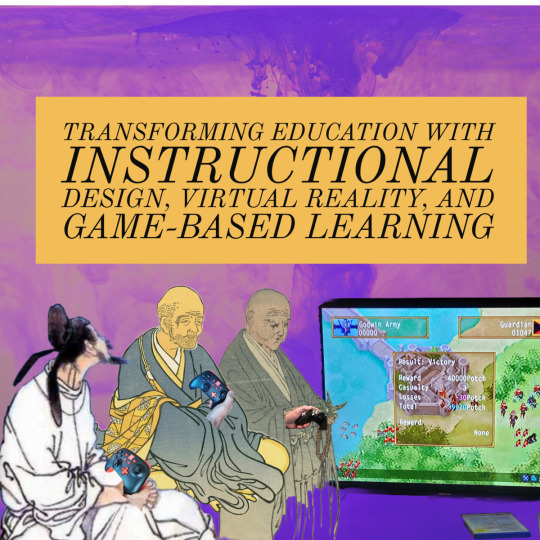
View On WordPress
#Captivate eLearning#Digital Game Narratives#Digital Learning#E-Learning Solutions#EdTech Innovations#Educational Gamification#educational technology#Engaging eLearning Content#Experiential Learning#Future of Learning#game based learning#Game Design for Education#Game Writing in Education#Gamification in Education#Gamified Assessment#Gamified Instructional Strategies.#Gamified Learning#Immersive Education#Immersive Learning Experiences#Innovative Pedagogy#instructional design#Interactive Learning#Interactive Simulations#Technology-Enhanced Learning#Transformative Education#Virtual Experiential Learning#Virtual Learning Environments#Virtual Reality in Education#VR Learning Applications#VR Simulations
0 notes
Text
#healthcare benefits#employee health benefits#healthcare solutions#healthcare services#stress management for employees#gamification in the workplace#gamification at work#healthcare management#SecondMedic Corporate healthcare solutions
0 notes
Text
Why Gamified Training Platforms Are Transforming Corporate Learning | MaxLearn
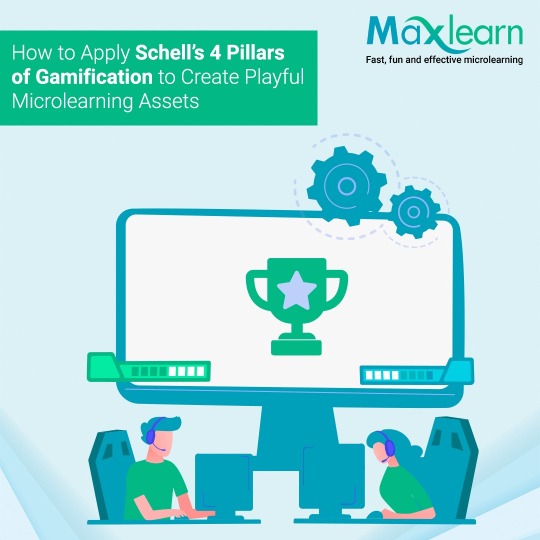
Harnessing Schell’s Four Pillars of Gamification for Effective Learning with MaxLearn
Gamification has become a powerful tool in education and corporate training, adding game-like elements to make learning more engaging, enjoyable, and effective. When applied thoughtfully, gamification can transform traditional learning experiences by tapping into intrinsic motivators and boosting knowledge retention. Among the many gamification models, Jesse Schell’s Four Pillars of Gamification stand out as a framework for creating meaningful and impactful learning experiences.
Jesse Schell, a game designer and professor, introduced the Four Pillars of Gamification — Motivation, Meaning, Mastery, and Autonomy. These pillars serve as foundational elements to create immersive experiences that captivate and motivate learners, enhancing their commitment and enjoyment in the learning process. For platforms like MaxLearn, which focus on microlearning, these pillars offer invaluable guidance for delivering gamified content that supports deeper learning and retention.
In this article, we’ll explore each of Schell’s Four Pillars of Gamification and how MaxLearn incorporates these elements to elevate learning experiences.
1. Motivation: Inspiring Engagement and Commitment
The first pillar, Motivation, is crucial in driving learners to engage with the content actively. Motivation is the underlying force that influences learners’ willingness to participate, complete modules, and achieve learning goals. In a learning environment, motivation can stem from various sources, including rewards, social recognition, and the intrinsic satisfaction of mastering new skills.
How MaxLearn Leverages Motivation
MaxLearn uses multiple motivational strategies to keep learners engaged:
Point Systems and Badges: Points and badges serve as immediate rewards, providing a sense of achievement. Each time learners complete a module or master a skill, they receive points or earn badges, which creates a positive reinforcement loop that motivates further engagement.
Leaderboards and Friendly Competition: Leaderboards add an element of competition that drives engagement and motivation. Employees can see their progress relative to their peers, sparking friendly competition that encourages them to put in their best effort.
Progress Tracking and Milestones: MaxLearn provides learners with clear progress tracking, showing how much they’ve accomplished and how close they are to completing their goals. Milestones are motivational markers that give learners a sense of accomplishment along their journey.
This blend of extrinsic (badges, points) and intrinsic (personal achievement) motivators helps sustain engagement, ensuring learners remain committed to their training journey.
2. Meaning: Creating Relevance and Purpose in Learning
Meaning is the second pillar and involves creating a sense of purpose and relevance in the learning content. When learners see how their training aligns with their personal or professional goals, they are more likely to feel invested. Meaningful content not only reinforces engagement but also increases the likelihood of retention, as learners understand the value and importance of the material.
How MaxLearn Embeds Meaning
MaxLearn creates meaningful learning experiences by:
Connecting Learning to Real-World Applications: MaxLearn curates modules that reflect actual workplace scenarios, bridging the gap between theory and practice. This approach helps learners understand how the knowledge and skills they acquire can directly impact their roles.
Aligning with Career Growth and Personal Goals: Training is often a key factor in career advancement. MaxLearn highlights how mastering specific modules or skills can contribute to individual career growth, helping employees view learning as an investment in their future.
Personalized Learning Paths: MaxLearn’s AI-powered platform tailors content to each learner's role, knowledge level, and goals, making the learning experience highly relevant. This personalization helps learners find meaning in the content, as they can see how it directly applies to their unique situation.
By ensuring that learning content resonates on a personal and professional level, MaxLearn strengthens learners’ motivation and commitment.
3. Mastery: Cultivating Skills and Confidence
Mastery is the third pillar and represents the process of developing competence, confidence, and proficiency in specific skills. Mastery is particularly important in learning because it builds a sense of accomplishment and self-efficacy. When learners feel that they are growing and achieving mastery, they are more likely to be motivated to continue their learning journey.
How MaxLearn Fosters Mastery
MaxLearn encourages mastery by:
Breaking Down Content into Manageable Chunks: Microlearning divides complex information into smaller, more manageable modules. This allows learners to focus on mastering one skill or piece of knowledge at a time, making the learning process less overwhelming.
Providing Immediate Feedback: Immediate feedback is crucial for mastery, allowing learners to understand their strengths and areas for improvement. MaxLearn’s platform includes quizzes and assessments that provide instant feedback, helping learners to correct mistakes and reinforce knowledge.
Encouraging Practice and Repetition: Mastery requires consistent practice. MaxLearn integrates spaced repetition in its microlearning platform, allowing learners to revisit and practice content periodically. This repetition reinforces learning and solidifies knowledge over time, promoting mastery.
Offering Level-Ups and Skill-Based Challenges: As learners progress through the training material, MaxLearn rewards mastery by unlocking advanced levels and more challenging content. This encourages learners to keep growing their skills, recognizing their progress and achievements.
These elements make the learning journey rewarding and provide a clear sense of progress, boosting learners' confidence and skill level.
4. Autonomy: Empowering Learners with Choice
The final pillar, Autonomy, is about giving learners a sense of control over their learning experience. When learners feel they have agency and can make choices in their learning path, they are more likely to feel motivated and engaged. Autonomy is a key factor in self-directed learning, which is especially valuable in professional development settings.
How MaxLearn Promotes Autonomy
MaxLearn empowers learners by:
Offering Flexible Learning Paths: Learners can choose from a variety of modules and decide the order in which to complete them. This flexibility allows them to prioritize content that aligns with their immediate needs and interests.
Allowing Self-Paced Learning: MaxLearn’s platform enables learners to learn at their own pace, which is especially beneficial for busy professionals who need to balance training with work responsibilities.
Providing Module Selection Options: Rather than a rigid curriculum, MaxLearn allows learners to select the modules that are most relevant to their roles or goals. This freedom gives learners a sense of ownership over their learning experience.
Encouraging Goal-Setting: MaxLearn’s platform encourages learners to set personal learning goals and track their progress. This autonomy in goal-setting creates a sense of personal responsibility and motivation, as learners work toward achievements they have defined for themselves.
This approach not only increases engagement but also supports self-directed learning, allowing individuals to take control of their growth and development.
Bringing It All Together: The Power of Schell’s Four Pillars in MaxLearn’s Gamified Platform
MaxLearn’s platform exemplifies Schell’s Four Pillars of Gamification, integrating Motivation, Meaning, Mastery, and Autonomy into the learning experience. By harnessing these pillars, MaxLearn is able to provide learners with a highly engaging and effective training environment that promotes sustained engagement, meaningful learning, skill development, and self-directed growth.
The Impact of Schell’s Four Pillars on Learning Outcomes:
Enhanced Engagement: Learners are more likely to stay engaged and complete training when they feel motivated, see personal meaning in the content, and experience a sense of autonomy.
Improved Retention: Meaningful content, coupled with opportunities for mastery, leads to better long-term retention, as learners are able to deeply understand and apply their knowledge.
Self-Empowerment: Autonomy fosters a sense of ownership over the learning process, encouraging individuals to pursue continuous improvement and self-directed growth.
Why Gamification Matters in Today’s Learning Landscape: As the demand for effective, engaging learning experiences grows, gamification plays an increasingly important role in training. Schell’s Four Pillars offer a framework that aligns perfectly with the goals of modern learning platforms like MaxLearn. By tapping into these foundational principles, MaxLearn is not only enhancing knowledge retention but also fostering a more motivated, skilled, and self-driven workforce.
Conclusion: Schell’s Pillars as the Cornerstone of Effective Gamified Learning with MaxLearn
Jesse Schell’s Four Pillars of Gamification provide a proven framework that, when applied effectively, can revolutionize learning. MaxLearn has embraced these pillars to create a microlearning platform that empowers learners, keeps them motivated, and ensures meaningful, long-lasting knowledge retention. By integrating motivation, meaning, mastery, and autonomy, MaxLearn delivers a comprehensive, learner-centric approach to gamified training that meets the evolving needs of today’s workforce.
#gamified learning apps#gamification resources#gamification learning#gamification apps#gamification in the workplace#gamification training#gamification in corporate training#gamification examples in training#gamification ideas for training#what is gamification#what is gamification aspect#gamify definition#gamification techniques#gamification features#gamification software#gamification platform#gamified learning platforms#gamification solutions#gamified learning#gamified training platform#gamified learning platform#gamification for employee engagement#Microlearning Platform#Microlearning Courses#Microlearning Platforms#microlearning application#microlearning authoring tools#microlearning tools#microlearning software#micro learning courses
0 notes